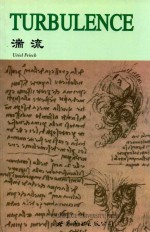图书介绍
湍流pdf电子书版本下载

- Uriel Frisch著 著
- 出版社: 世界图书出版公司北京公司
- ISBN:7506238233
- 出版时间:1998
- 标注页数:296页
- 文件大小:30MB
- 文件页数:309页
- 主题词:
PDF下载
下载说明
湍流PDF格式电子书版下载
下载的文件为RAR压缩包。需要使用解压软件进行解压得到PDF格式图书。建议使用BT下载工具Free Download Manager进行下载,简称FDM(免费,没有广告,支持多平台)。本站资源全部打包为BT种子。所以需要使用专业的BT下载软件进行下载。如 BitComet qBittorrent uTorrent等BT下载工具。迅雷目前由于本站不是热门资源。不推荐使用!后期资源热门了。安装了迅雷也可以迅雷进行下载!
(文件页数 要大于 标注页数,上中下等多册电子书除外)
注意:本站所有压缩包均有解压码: 点击下载压缩包解压工具
图书目录
CHAPTER 1 Introduction 1
1.1 Turbulence and symmetries 1
1.2 Outline of the book 11
CHAPTER 2 Symmetries and conservation laws 14
2.1 Periodic boundary conditions 14
2.2 Symmetries 17
2.3 Conservation laws 18
2.4 Energy budget scale-by-scale 21
CHAPTER 3 Why a probabilistic description of turbulence? 21
3.1 There is something predictable in a turbulent signal 27
3.2 A model for deterministic chaos 31
3.3 Dynamical systems 36
3.4 The Navier-Stokes equation as a dynamical system 37
CHAPTER 4 Probabilistic tools:a survey 40
4.1 Random variables 40
4.2 Random functions 45
4.3 Statistical symmetries 46
4.4 Ergodic results 49
4.5 The spectrum of stationary random functions 52
CHAPTER 5 Two experimental laws of fully developed turbulence 52
5.1 The two-thirds law 57
5.2 The energy dissipation law 67
CHAPTER 6 The Kolmogorov 1941 theory 72
6.1 Kolmogorov 1941 and symmetries 72
6.2 Kolmogorov's four-fifths law 76
6.2.1 The Kámán-Howarth-Monin relation for anisotropic turbulence 77
6.2.2 The energy flux for homogeneous turbulence 79
6.2.3 The energy flux for homogeneous isotropic turbulence 81
6.2.4 From the energy flux relation to the four-fifths law 84
6.2.5 Remarks on Kolmogorov's four-fifths law 86
6.3 Main results of the Kolmogorov 1941 theory 89
6.3.1 The Kolmogorov-Obukhov law and the structure func-tions 89
6.3.2 Effect of a finite viscosity:the dissipation range 91
6.4 Kolmogorov and Landau:the lack of universality 93
6.4.1 The original formulation of Landau's objection 93
6.4.2 A modern reformulation of Landau's objection 94
6.4.3 Kolmogorov and Landau reconciled? 97
6.5 Historical remarks on the Kolmogorov 1941 theory 98
CHAPTER 7 Phenomenology of turbulence in the sense of Kolmogorov 1941 100
7.1 Introduction 100
7.2 Basic tools of phenomenology 101
7.3 The Richardson cascade and the localness of interactions 103
7.4 Reynolds numbers and degrees of freedom 106
7.5 Microscopic and macroscopic degrees of freedom 109
7.6 The distribution of velocity gradients 111
7.7 The law of decay of the energy 112
7.8 Beyond phenomenology:finite-time blow-up of ideal flow 115
CHAPTER 8 Intermittency 120
8.1 Introduction 120
8.2 Self-similar and intermittent random functions 121
8.3 Experimental results on intermittency 127
8.4 Exact results on intermittency 133
8.5 Intermittency models based on the velocity 135
8.5.1 The β-model 135
8.5.2 The bifractal model 140
8.5.3 The multifractal model 143
8.5.4 A probabilistic reformulation of the multifractal model 146
8.5.5 The intermediate dissipation range and multifractal universality 149
8.5.6 The skewness and the flatness of velocity derivatives according to the multifractal model 155
8.6 Intermittency models based on the dissipation 159
8.6.1 Multifractal dissipation 159
8.6.2 Bridging multifractality based on the velocity and mul-tifractality based on the dissipation 163
8.6.3 Random cascade models 165
8.6.4 Large deviations and multifractality 168
8.6.5 The lognormal model and its shortcomings 171
8.7 Shell models 174
8.8 Historical remarks on fractal intermittency models 178
8.9 Trends in intermittency research 182
8.9.1 Vortex filaments:the sinews of turbulence? 185
8.9.2 Statistical signature of vortex filaments:dog or tail? 188
8.9.3 The distribution of velocity increments 192
CHAPTER 9 Further reading:a guided tour 195
9.1 Introduction 195
9.2 Books on turbulence and fluid mechanics 195
9.3 Mathematical aspects of fully developed turbulence 199
9.4 Dynamical systems,fractals and turbulence 203
9.5 Closure,functional and diagrammatic methods 206
9.5.1 The Hopf equation 207
9.5.2 Functional and diagrammatic methods 212
9.5.3 The direct interaction approximation 217
9.5.4 Closures and their shortcomings 219
9.6 Eddy viscosity,multiscale methods and renormalization 222
9.6.1 Eddy viscosity:a very old idea 222
9.6.2 Multiscale methods 226
9.6.3 Applications of multiscale methods in turbulence 230
9.6.4 Renormalization group(RG)methods 235
9.7 Two-dimensional turbulence 240
9.7.1 Cascades and vortices 241
9.7.2 Two-dimensional turbulence and statistical mechanics 243
9.7.3 Conservative dynamics‘punctuated’by dissipative events 249
9.7.4 From Flatland to three-dimensional turbulence 251
References 255
Author index 283
Subject index 289